Getting the colorbar can be done with a merging of the OP code with @cphlewis's excellent answer. I've posted this as a turnkey solution on the request of the OP in chat. The first version of code simply adds a color bar, the final version (under EDIT 2) does an axes affine translation and corrects a few parameters / simplifies the code to suit OP spec exactly.
"""
An experimental support for curvilinear grid.
"""
import numpy as np
import mpl_toolkits.axisartist.angle_helper as angle_helper
import matplotlib.cm as cmap
from matplotlib.projections import PolarAxes
from matplotlib.transforms import Affine2D
from mpl_toolkits.axisartist import SubplotHost
from mpl_toolkits.axisartist import GridHelperCurveLinear
def curvelinear_test2(fig):
"""
polar projection, but in a rectangular box.
"""
global ax1
# see demo_curvelinear_grid.py for details
tr = Affine2D().scale(np.pi/180., 1.) + PolarAxes.PolarTransform()
extreme_finder = angle_helper.ExtremeFinderCycle(10, 60,
lon_cycle = 360,
lat_cycle = None,
lon_minmax = None,
lat_minmax = (0, np.inf),
)
grid_locator1 = angle_helper.LocatorHMS(12) #changes theta gridline count
tick_formatter1 = angle_helper.FormatterHMS()
grid_locator2 = angle_helper.LocatorDMS(6)
tick_formatter2 = angle_helper.FormatterDMS()
grid_helper = GridHelperCurveLinear(tr,
extreme_finder=extreme_finder,
grid_locator1=grid_locator1,
tick_formatter1=tick_formatter1,
grid_locator2=grid_locator2,
tick_formatter2=tick_formatter2
)
ax1 = SubplotHost(fig, 1, 1, 1, grid_helper=grid_helper)
# make ticklabels of right and top axis visible.
ax1.axis["right"].major_ticklabels.set_visible(True)
ax1.axis["top"].major_ticklabels.set_visible(True)
ax1.axis["bottom"].major_ticklabels.set_visible(True) #Turn off?
# let right and bottom axis show ticklabels for 1st coordinate (angle)
ax1.axis["right"].get_helper().nth_coord_ticks=0
ax1.axis["bottom"].get_helper().nth_coord_ticks=0
fig.add_subplot(ax1)
grid_helper = ax1.get_grid_helper()
ax1.set_aspect(1.)
ax1.set_xlim(-4,15) # moves the origin left-right in ax1
ax1.set_ylim(-3, 20) # moves the origin up-down
ax1.set_ylabel('90$^\circ$ + Declination')
ax1.set_xlabel('Ascension')
ax1.grid(True)
#ax1.grid(linestyle='--', which='x') # either keyword applies to both
#ax1.grid(linestyle=':', which='y') # sets of gridlines
return tr
import matplotlib.pyplot as plt
fig = plt.figure(1, figsize=(5, 5))
fig.clf()
tr = curvelinear_test2(fig) # tr.transform_point((x, 0)) is always (0,0)
# => (theta, r) in but (r, theta) out...
r_test = [0, 1.2, 2.8, 3.8, 5, 8, 10, 13.3, 17] # distance from origin
deg_test = [0, -7, 12, 28, 45, 70, 79, 90, 100] # degrees ascension
out_test = tr.transform(zip(deg_test, r_test))
sizes = [40, 30, 10, 30, 80, 33, 12, 48, 45]
#hues = [.9, .3, .2, .8, .6, .1, .4, .5,.7] # Oddly, floats-to-colormap worked for a while.
hues = np.random.random((9,3)) #RGB values
# Use this block to generate colored points with a colorbar.
cm = plt.cm.get_cmap('RdYlBu_r')
z = np.random.random((len(r_test), 1)) # RGB values
SC = ax1.scatter(out_test[:,0], #ax1 is a global
out_test[:,1],
s=sizes,
c=z,
cmap=cm,
zorder=9) #on top of gridlines
# Colorbar
cbar = plt.colorbar(SC, shrink=1., pad=0.05)
cbar.ax.tick_params(labelsize=8)
cbar.set_label('colorbar', fontsize=8)
plt.show()
EDIT
Bit of tidying parameters, adding in OP data, removing redundancy yields the following plot. Still need to centre the data on -90 instead of 0 - at the moment this is hacked, but I'm sure curvelinear_test2() can be changed to account for it...

EDIT 2
Following OP comment on intermediate version in this answer, a final version as below gives the plot at the very end of the post - with -90 on the dec axis and subplot demo
"""
An experimental support for curvilinear grid.
"""
import numpy as np
import mpl_toolkits.axisartist.angle_helper as angle_helper
import matplotlib.cm as cmap
from matplotlib.projections import PolarAxes
from matplotlib.transforms import Affine2D
from mpl_toolkits.axisartist import SubplotHost
from mpl_toolkits.axisartist import GridHelperCurveLinear
def curvelinear_test2(fig, rect=111):
"""
polar projection, but in a rectangular box.
"""
# see demo_curvelinear_grid.py for details
tr = Affine2D().translate(0,90) + Affine2D().scale(np.pi/180., 1.) + PolarAxes.PolarTransform()
extreme_finder = angle_helper.ExtremeFinderCycle(10, 60,
lon_cycle = 360,
lat_cycle = None,
lon_minmax = None,
lat_minmax = (-90, np.inf),
)
grid_locator1 = angle_helper.LocatorHMS(12) #changes theta gridline count
tick_formatter1 = angle_helper.FormatterHMS()
grid_helper = GridHelperCurveLinear(tr,
extreme_finder=extreme_finder,
grid_locator1=grid_locator1,
tick_formatter1=tick_formatter1
)
ax1 = SubplotHost(fig, rect, grid_helper=grid_helper)
# make ticklabels of right and top axis visible.
ax1.axis["right"].major_ticklabels.set_visible(True)
ax1.axis["top"].major_ticklabels.set_visible(True)
ax1.axis["bottom"].major_ticklabels.set_visible(True) #Turn off?
# let right and bottom axis show ticklabels for 1st coordinate (angle)
ax1.axis["right"].get_helper().nth_coord_ticks=0
ax1.axis["bottom"].get_helper().nth_coord_ticks=0
fig.add_subplot(ax1)
grid_helper = ax1.get_grid_helper()
# You may or may not need these - they set the view window explicitly rather than using the
# default as determined by matplotlib with extreme finder.
ax1.set_aspect(1.)
ax1.set_xlim(-4,25) # moves the origin left-right in ax1
ax1.set_ylim(-3, 30) # moves the origin up-down
ax1.set_ylabel('Declination')
ax1.set_xlabel('Ascension')
ax1.grid(True)
#ax1.grid(linestyle='--', which='x') # either keyword applies to both
#ax1.grid(linestyle=':', which='y') # sets of gridlines
return ax1,tr
def skip_comments(f):
'''
Read lines that DO NOT start with a # symbol.
'''
for line in f:
if not line.strip().startswith('#'):
yield line
def get_data_bb():
'''RA, DEC data file.
'''
# Path to data file.
out_file = 'bb_cat.dat'
# Read data file
with open(out_file) as f:
ra, dec = [], []
for line in skip_comments(f):
ra.append(float(line.split()[0]))
dec.append(float(line.split()[1]))
return ra, dec
import matplotlib.pyplot as plt
fig = plt.figure(1, figsize=(5, 5))
fig.clf()
ax1, tr = curvelinear_test2(fig,121) # tr.transform_point((x, 0)) is always (0,0)
# => (theta, r) in but (r, theta) out...
# Read RA, DEC data from file.
ra, dec = get_data_bb()
out_test = tr.transform(zip(ra, dec))
# Use this block to generate colored points with a colorbar.
cm = plt.cm.get_cmap('RdYlBu_r')
z = np.random.random((len(ra), 1)) # RGB values
SC = ax1.scatter(out_test[:,0], #ax1 is a global
out_test[:,1],
marker = 'o',
c=z,
cmap=cm,
lw = 0.,
zorder=9) #on top of gridlines
# Colorbar
cbar = plt.colorbar(SC, shrink=1., pad=0.1)
cbar.ax.tick_params(labelsize=8)
cbar.set_label('colorbar', fontsize=8)
ax2, tr = curvelinear_test2(fig,122) # tr.transform_point((x, 0)) is always (0,0)
# => (theta, r) in but (r, theta) out...
# Read RA, DEC data from file.
ra, dec = get_data_bb()
out_test = tr.transform(zip(ra, dec))
# Use this block to generate colored points with a colorbar.
cm = plt.cm.get_cmap('RdYlBu_r')
z = np.random.random((len(ra), 1)) # RGB values
SC = ax2.scatter(out_test[:,0], #ax1 is a global
out_test[:,1],
marker = 'o',
c=z,
cmap=cm,
lw = 0.,
zorder=9) #on top of gridlines
# Colorbar
cbar = plt.colorbar(SC, shrink=1., pad=0.1)
cbar.ax.tick_params(labelsize=8)
cbar.set_label('colorbar', fontsize=8)
plt.show()
Final plot:






